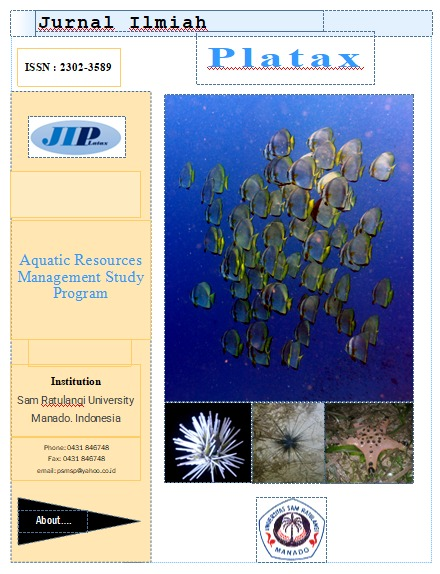Study of Planned Maintenance System Senior Admiral John Lie’s Training Ship on Shipping Safety
DOI:
https://doi.org/10.35800/jip.v11i2.48973Keywords:
Planned Maintenance System;, Ship Maintenance;, Shipping Safety;Abstract
The implementation of the ship maintenance management system on Rear Admiral Jhon Lie's training ship did not run optimally, which impacted the less-than-optimal condition of various training ship equipment because the crew did not carry out the ship maintenance system according to the procedure, resulting in the incident that the ship's anchor winch operation did not function optimally when the ship was anchored in Belang Port, Southeast Minahasa. This study aims to identify and analyze the positive and significant effect of the planned maintenance system on shipping safety. The primary data collection methods used in this study were questionnaires and interviews. In this study, data processing and presentation were in the form of diagrams and path analysis with structural equation modeling (SEM-PLS) using SmartPLS. From the results of the data analysis, the R-square value of shipping safety (Y) is 0.307, which means that the planned maintenance system (X1) and ship maintenance (X2) can affect shipping safety (Y) by 30.7%. Ship maintenance (X2) has a significant effect on sailing safety (Y), with P-values = 0.033 0.05 (hypothesis accepted). The planned maintenance system (X1) has a significant effect on sailing safety (Y), with a P-value of 0.037 0.05 (hypothesis accepted). As a result of the analysis, it was found that the planned maintenance system has a significant effect on shipping safety.
References
Ansori, M. (2020). Metode Penelitian Kuantitatif Edisi 2. Airlangga University Press.
PT VALLIANZ OFFSHORE MARITIM. (2018). Head Office Procedure Manual.
Presiden Republik Indonesia. (2020). Penataan Ekosistem Logistik Nasional (p. 3).
Willy, Abdilah dan Hartono, Jogiyanto. 2015. Partial Least Square (PLS) – Alternatif Structural Modeling (SEM) dalam penelitian bisnis. Penerbit Andi: Yogyakarta.
Chin dalam Jogiyanto dan Willy. (2015). Validitas diskriminan ditentukan dengan melihat cross loading factor dari setiap variabel.
Ghozali. (2014). OuterModel dapat menjelaskan bagaimana setiap blok indikator berhubungan dengan variabel letennya.
Gunawan, I., (2013), Metode Penelitian Kualitatif. Bumi Aksara, Jakarta.
Kurniawan, F., (2013), Manajemen Perawatan Industri, Graha Ilmu, Yogyakarta.
Layuk, A. A., (2021), Penerapan Sistem Manajemen Perawatan Kapal dalam Menunjang Kelancaran Pengoperasian Kapal MT. CATUR SAMUDRA. Venus Journal, 9(1), 9–15.
Mekarisce, A. A., (2020), Teknik Pemeriksaan Keabsahan Data pada Penelitian Kualitatif di Bidang Kesehatan Masyarakat. Jurnal Ilmiah Kesehatan Masyarakat: Media Komunikasi Komunitas Kesehatan Masyarakat, 12(3), 145–151.
NSOS, T. T., (2018), Manajemen Perawatan dan Perbaikan Kapal, Direktorat Jendral Departemen Perhubungan, Jakarta.
IMO. (n.d.). International Maritime Organization. https://www.imo.org/
IMO. (2004a). SOLAS; Chapter V, Regulation 19 Carriage requirements for shipborne navigational systems and equipment.
SOLAS Consolidate Edition (2018). Diakses dari SOLAS-Consolidated-Edition-2018.docx.pdf (seamanmemories.com)
ISM Code. (2019). Sekilas Tentang ISM Code & PM 45 Tahun 2012 Tentang Manajemen Keselamatan Kapal. http://blog.docking.id/sekilas-tentang-ism -code-pm-45-tahun-2012-tentang-manajemen-keselamatan-kapal
Jogiyanto. (2013). Pengujian reliabilitas dapat dilihatberdasarkan nilai Chonbach’s alpha harus lebih dari 0,6 dan nilai composite reliability harus lebih dari 0,7.
Koji Sekimizu. (2010). STCW A GUIDE FOR SEAFARERS.
Managing Director WALLEM SHIPMANAGEMENT. (2010). Shipboard Management Manual - Part 1. In Organization (p. 42).
Panduan Penulisan Proposal Hasil Penelitian Tesis. (2019). Univesitas Sam Ratulangi, Manado: Sulawesi Utara.
Anantharaman, M., & Lawrence, N., (2013), Develop a Condition Based Maintenance Model for a Vessel’s Main Propulsion System and Related Subsystems, Marine Navigation and Safety of Sea Transportation: Maritime Transport & Shipping, 235-238.
Downloads
Published
How to Cite
Issue
Section
License
Copyright (c) 2023 Azhar Ariansyah Ansar, Alfret Luasunaung, Deiske Adeliene Sumilat, Revols Dolfi Ch Pamikiran, Frangky Erens Kaparang , Hens Onibala

This work is licensed under a Creative Commons Attribution-NonCommercial 4.0 International License.
COPYRIGHT
Authors who publish with this journal agree to the following terms:
Authors hold their copyright and grant this journal the privilege of first publication, with the work simultaneously licensed under a Creative Commons Attribution License that permits others to impart the work with an acknowledgment of the work's origin and initial publication by this journal.
Authors can enter into separate or additional contractual arrangements for the non-exclusive distribution of the journal's published version of the work (for example, post it to an institutional repository or publish it in a book), with an acknowledgment of its underlying publication in this journal.
Authors are permitted and encouraged to post their work online (for example, in institutional repositories or on their website) as it can lead to productive exchanges, as well as earlier and greater citation of the published work (See The Effect of Open Access).




















